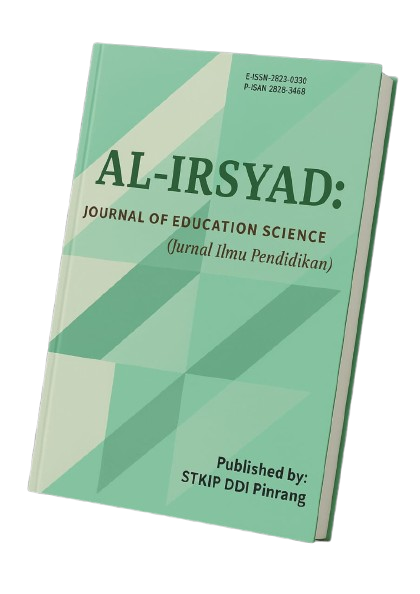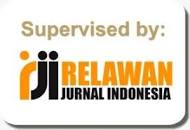ANALYSIS OF THE EFFECTIVENESS OF THE DUOLINGO APPLICATION IN ENGLISH PRONUNCIATION LEARNING
DOI:
https://doi.org/10.58917/aijes.v4i2.257Kata Kunci:
Duolingo Application, English Pronunciation LearningAbstrak
This research aimed to analyze the effectiveness of using the Duolingo application in learning English pronunciation. This was descriptive qualitative research. The participants consisted of 24 undergraduate students at Institut Az Zuhra. Interviews and observations were conducted to collect data. They were chosen due to lacking at pronouncing the words. It was because they did not get activity about pronunciation when they were in school. After conducting the research, it was found that the Duolingo application used in pronunciation class was effective to be applied. It was fun, enjoyable, interesting, and motivating for the students. It improved their confidence and reduced their pronunciation anxiety. Additionally, there are some limitations of using the Duolingo application, such as annoying advertisements, and it cannot be accessed offline.
Referensi
Astarilla, L. (2018). University Students ’ Perception towards the Use of Duolingo Application in Learning English. 1–9.
Balčytytė, Giedrė; Skerstonaite, V. (2024). The Effect of Duolingo on l2 Learners ’ Pronunciation : Vowel Analysis through Minimal Pairs Duolingo programėlės poveikis antrosios kalbos besimokančiųjų tarimui : balsių tarimo analizė minimalių porų kontekste. 54, 36–45.
Fahlevi, A. R. (2025). THE EFFECTIVENESS OF DUOLINGO ’ S VOICE TRAINING FEATURE IN ENHANCING VOCABULARY PHONEMIC SKILLS OF.
Ilyosovna, N. A. (2020). The Importance of English Language. 22–24.
Inayah, Nurul; Yusuf, Qismullah; Fibula, N. (2020). EXPLORING UNDERGRADUATE STUDENTS ’ PERCEPTION. Humanities & Social Sciences Reviews, 8(3), 76–85.
Gilakjani, A. P., & Ahmadi, M. R. (2021). Why Is Pronunciation So Difficult to Learn?. English language teaching. ERIC: INSTITUT OF EDUCATION, 74-83.
Irzawati, I., & Unamo, A. F. (2023). Students ’ Perceptions and Attitudes towards the Utilization of Duolingo in EFL Learning. 10(2), 123–138.
Kieu, V. L., Anh, D. T., Tran, P. D. B., Nga, V. T. T., & Ho, P. V. P. (2021). The Effectiveness of Using Technology in Learning English. 12(2), 24–40.
Lambert, V.A; Lambert, C. . (2012). Editorial : Qualitative Descriptive Research : An Acceptable Design. Pacific Rim International Journal of Nursing Research, 16(4), 255–256.
Nguyen, Khanh Tuong; Thai, C. D. (2024). Studies A STUDY ON DUOLINGO MOBILE APPLICATIONS TO IMPROVE EFL STUDENTS ’ LISTENING COMPREHENSION PERFORMANCES. European Journal of Alternative Education Studies, 217–265. https://doi.org/10.46827/ejae.v9i1.5342
Nushi, Musa; Eqbali, M. H. (2003). DUOLINGO : A MOBILE APPLICATION TO ASSIST SECOND LANGUAGE LEARNING ( App Review ). 17(1), 89–98.
RAO, P. S. (2019). The importance of speaking skills in English classrooms. Alford Council of International English & Literature Journal, 6-18.
Pennington, M. C. (2021). Teaching Pronunciation : The State of the Art 2021. https://doi.org/10.1177/00336882211002283
Prodanovska-Poposka, V. (2017). A STUDY OF PROPER PRONUNCIATION AS A FACTOR OF SUCCESSFUL. CBU International Conference on Innovation in Science and Education, 778–783.
Rahayu, F. E. (2024). The Influence of Using Duolingo Application On Students Pronounciation at The Tenth Grade of MAN 1 East Lampung.
Tiara, A. D., Rahman, M. A., & Handrianto, C. (2021). International Journal of Education , Information Technology and Others ( IJEIT ). 4(4), 690–701. https://doi.org/10.5281/zenodo.5775915
Unduhan
Diterbitkan
Cara Mengutip
Terbitan
Bagian
Lisensi
Hak Cipta (c) 2025 Rahma Widi, Annisa Tasyakurna M, Hafni Hafsah

Artikel ini berlisensi Creative Commons Attribution 4.0 International License.























